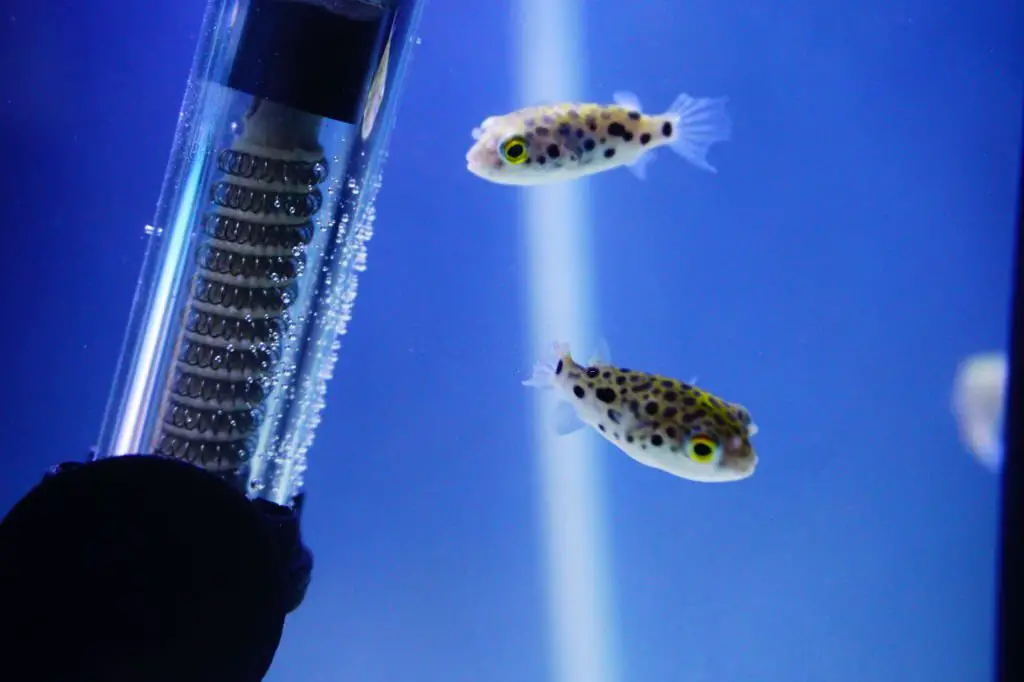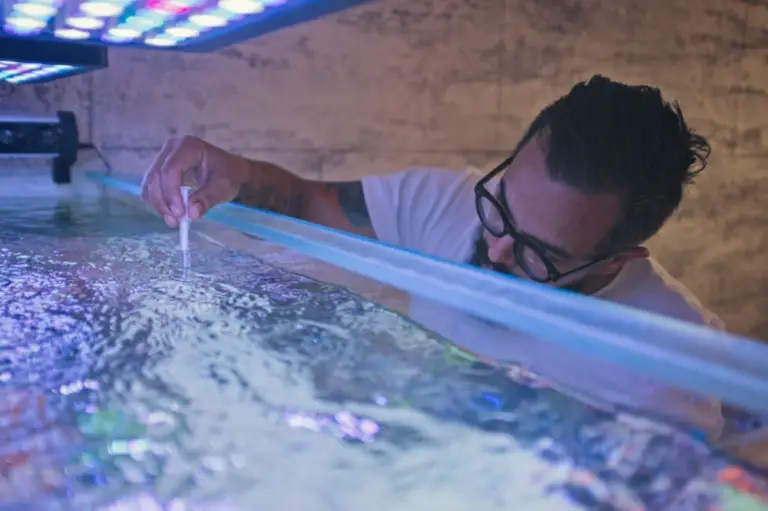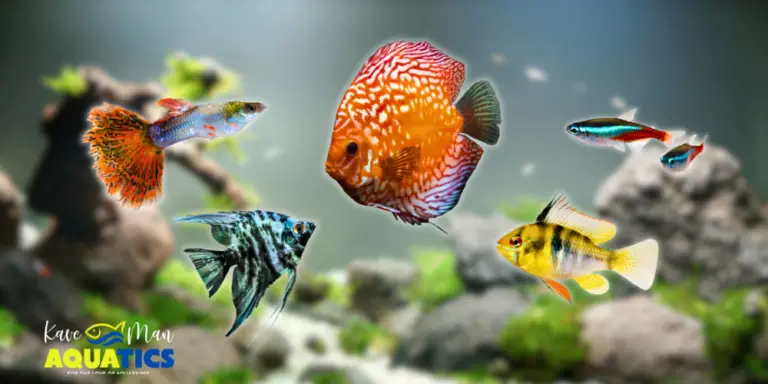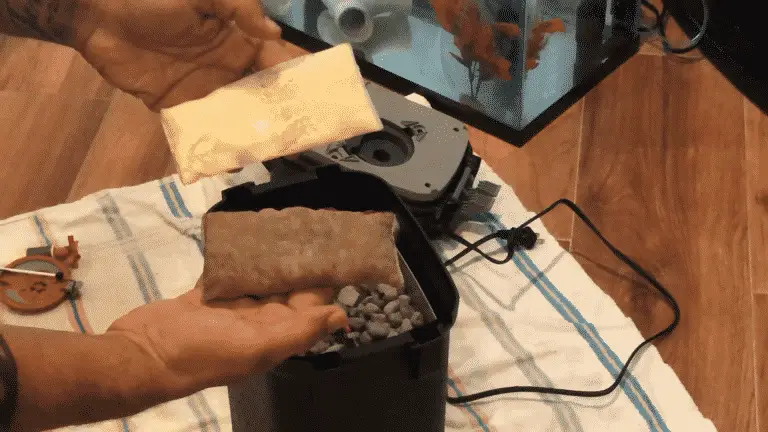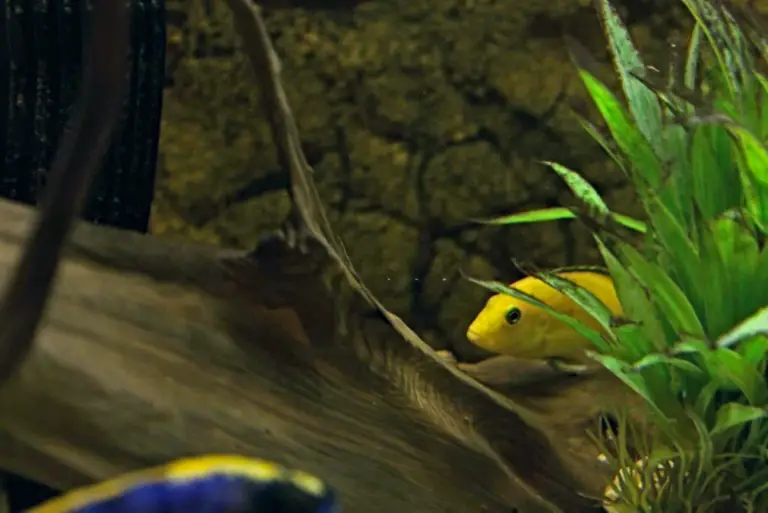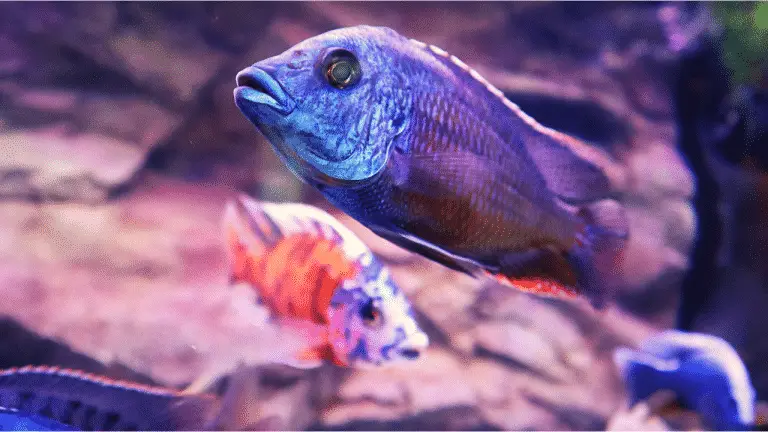Aquarium Heaters: An Easy Size Guide for Your Tank
Aquarium heaters are essential for cold-blooded species in your aquarium that rely on the temperature of the water to maintain their body temperature. This means that you must supply heat to your aquarium and keep it at the proper temperature for your fish.
An aquarium heater is a critical piece of equipment when you start your fishkeeping journey. Depending on your setup, you may select from a few different types of heaters and use either one or more heaters. The wattage rating of a heater indicates its capacity or heating capability.
Types of Aquarium Heaters
Here is a list of the different types of aquarium heaters you can choose to utilize.
Hang-on-Tank Heaters
Hang-on heaters often attach to the back of the tank with suction cups, a hook, or other fastening mechanisms over the edge of the aquarium. They are only partially submerged and are less effective than other types of aquarium heaters.
That said, they are suitable for smaller tanks. When using several hang-on heaters in big tanks, it’s better to place them on different sides of the aquarium.
Submersible Heaters
Submersible heaters are entirely immersed in the water and can be mounted horizontally or vertically at the rear of the tank. They’re frequently positioned horizontally near the substrate. Submersible heaters are often more consistent and efficient than hang-on heaters, especially in bigger tanks. The Orlushy Aquarium Heater is a perfect example.
Heating Cable Heaters
A heating cable is installed beneath the gravel or substrate and linked to a control device. It can help to reduce dead areas in freshwater-planted aquariums. However, because you have to dig up the substrate to repair or replace the cable, this sort of heater isn’t the greatest choice for saltwater reef systems.
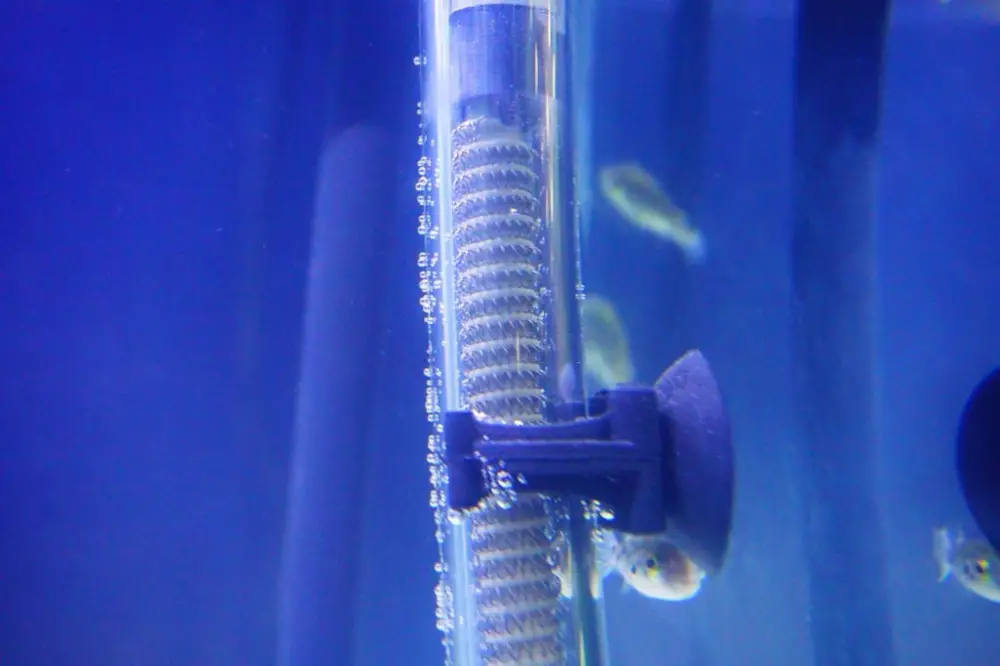
Finding the Right Aquarium Heater Size
The water volume of the tank, the typical temperature in the room where the tank is placed, and the target water temperature for the tank are used to size a tank heater (or heaters).
The general rule of thumb for heater wattage is to use between 2.5 and 5 watts per gallon of actual water volume in the aquarium. However, depending on how much you want to raise the temperature, additional wattage may be necessary. If you’re using multiple heaters, the overall heating capacity of all the devices should equal the needed watts.
Subtract the average temperature of the room from the intended temperature for the aquarium water to adjust for the room temperature. The quantity of heating required, measured in degrees, is the result.
Use the aquarium heater size chart below to determine the right aquarium heater size for your aquarium and its required temperature. For example:
- Average room temperature: 68 degrees Fahrenheit
- Target water temperature: 77 degrees Fahrenheit
- Heating required: 9 degrees Fahrenheit (77 – 68 = 9)
- Tank size: 20 gallon
- Heater size needed: 50 watts
| Tank Size | Raise heat with 9 degrees Fahrenheit (5 degrees Celsius) | Raise heat with 18 degrees Fahrenheit (10 degrees Celsius) | Raise heat with 27 degrees Fahrenheit (15 degrees Celsius) |
|---|---|---|---|
| 5 Gallon/20 Liter | 25 watt | 50 watt | 75 watt |
| 10 Gallon/40 Liter | 50 watt | 75 watt | 75 watt |
| 20 Gallon/75 Liter | 50 watt | 75 watt | 150 watt |
| 25 Gallon/100 Liter | 75 watt | 100 watt | 200 watt |
| 40 Gallon/150 Liter | 100 watt | 150 watt | 300 watt |
| 50 Gallon/200 Liter | 150 watt | 200 watt | two 200 watt |
| 65 Gallon/250 Liter | 200 watt | 250 watt | two 250 watt |
| 75 Gallon/300 Liter | 250 watt | 300 watt | two 300 watt |
8 Pro Tips for Using Aquarium Heaters
1. Two May Be Better Than One
Two heaters may be necessary for bigger tanks or when the room temperature is much lower than the desired water temperature. To provide uniform heating, heaters should be put at opposing ends of the tank.
2. Apply Even Heat Distribution
Multiple units when using hang-on and submersible heaters are recommended. This results in more even heat distribution and reduces the load on the heaters. Also, if one of the heaters fails, the temperature may not drop too far until you can replace it. It’s also a good idea to get an additional heater as a backup.
3. Consider Heater Length and Tank Height
The length of the heater tube plays a critical role. In general, the heating tubing should be the same height as your tank.
4. Examine Tank Location
Examine the area around the aquarium for heat sources and temperature variations. Your tank might be positioned near an air vent or intermittent heat sources, causing the temperature to surge and dip.
5. Unplug Your Heaters
When draining the tank, always unplug the heater to prevent it from overheating when it is no longer submerged.
6. Customize Temperatures
Some heaters include a unique number of settings for thermostat control, allowing you to customize the temperature to your preference. Other heaters feature settings that range from low to high without indicating precise temperatures. The former is easier to operate, but always double-check that the heater setting is keeping the aquarium at the proper temperature.
Invest in a temperature controller to give you more control over your tank’s water temperature. This video explains why you need to invest in an aquarium temperature controller:
7. More Even Heat Distribution
Place the heater near the filter’s water outlet so that the flowing water distributes the heated water throughout the tank.
8. Use an Aquarium Thermometer
To ensure that the heater is keeping the aquarium water at the proper temperature, use an aquarium thermometer. Move the thermometer around the aquarium to check the temperature in several spots to ensure that the water temperature is uniform.
Aquarium Maintenance and Crystal Clear Water
Aquarium heaters are crucial to your fish and even your plants’ overall health and well-being. There are a few different types of heaters you can choose from as well as different ways in which you can use them in your tank.

Maintaining a clean and pristine aquarium also plays a role in your tank and fish health. Water changes, vacuuming and general maintenance will help clean the water. But there is more to learn to maintain crystal clear aquarium water.
-
Aquarium Heaters: An Easy Size Guide for Your Tank
Aquarium heaters are critical pieces of equipment. So how do you choose the right heater size for your tank? Use our aquarium heater size chart!

